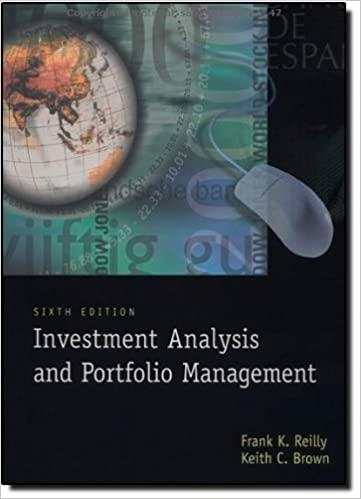Answered step by step
Verified Expert Solution
Question
1 Approved Answer
arbitrage profit. ( Hint: Assume that the zero - coupon bonds listed in Table 1 are tradeable bonds. That is , they can be bought
arbitrage profit. Hint: Assume that the zerocoupon bonds listed in Table are tradeable bonds. That is they can be bought or sold short in any quantity necessary. Calculate the riskless profit to be earned today per $ face value of Bond A
Be sure to clearly specify the quantity of each of the $ face value ZeroCoupon bonds that should be bought or shortsold in the strategy for each $ of face value of Bond A that is being shortsold or bought. Your strategy should generate a cash inflow riskfree profit at Time Zero, and net cash flows of zero at all future dates.
Guidance For Part c: You are asked to describe an arbitrage strategy, and calculate the riskfree profit at Time Zero per $ face value at Time To help discover the correct strategy:
Begin by taking the $ Time face value and discount it back one period to Time Zero using the oneperiod spot rate.
Next, compound the same $ at Time into the future for one period ie find its future value at Time using the quoted forward rate of
Then take that future value just calculated in Step and discount it back for two periods find its present value at Time Zero using the twoperiod spot rate.
Comparing these two present values you should be able to determine the correct borrowing & lending strategy. Assume that you can borrow or lend at any of the three rates: the oneperiod spot rate, the twoperiod spot rate, and the quoted forward rate of Your strategy should generate a net cash inflow the riskfree profit today at Time Zero, and zero net cash flows at Time and at Time
If you want to confirm your understanding you do NOT need to do this as part of the assignment change the problem by instead beginning with a $ face value at Time Find the present value of this $ two ways:
Discount this $ back two periods to Time Zero using the twoperiod spot rate.
Discount the same $ back to Time using the quoted forward rate, and then discount that Time value back oneperiod to Time Zero using the oneperiod spot rate.
Comparing these two present values you should be able to determine the correct borrowing & lending strategy. In general it will be the same as in the original setting of $ face value at Time but the riskfree profit at Time Zero will be different.

Step by Step Solution
There are 3 Steps involved in it
Step: 1

Get Instant Access to Expert-Tailored Solutions
See step-by-step solutions with expert insights and AI powered tools for academic success
Step: 2

Step: 3

Ace Your Homework with AI
Get the answers you need in no time with our AI-driven, step-by-step assistance
Get Started


